Worms in the human body are parasites that cannot survive by themselves. They can only survive and reproduce through their host (human or animal). Parasitic diseases are caused by the worms themselves or their larvae in humans. This disease is spread by means of infection, and the invasion of worms is often not noticed and gradually causes physical disorders.
First, you should understand what a worm is. This is the general term for worms that parasitize humans, animals and even plants. This explanation is also an answer to the question of what is a worm. The terms "worm" and "worm" are synonymous.
The most dangerous worm invasion is the long-term asymptomatic form, leading to diseases caused by nutritional deficiencies. Intestinal parasites survive by absorbing nutrients from the human body. After other symptoms of intestinal parasites appear, worm invasion can already be detected at an advanced stage.
Some intestinal parasite larvae can reach various body tissues. In this case, inflammatory deposits form because the immune system recognizes the larva as a foreign organism. Due to the presence of worms in the human body, certain allergic reactions of the immune system may occur.
When a worm appears in the human body, the symptoms and treatment of the invasion are closely related to the elimination of the cause of the discomfort, that is, the parasite, and the signs of its existence will disappear.
Parasite infection route
There are many factors that cause worms to appear. Their appearance may be due to the following conditions:
- One of the most common risk factors for helminthiasis is the impact of mass tourism;
- Second is water and food pollution;
- Can be infected with worms after eating meat products and sausages;
- Unwashed fruits and vegetables are the main source of parasite larvae;
- Frequently record the spread of worms from pets.
Symptoms of parasitic diseases
Worm infections can manifest in different ways, depending on the type of parasite. The most common manifestations are as follows:

- Constipation-difficult bowel movements caused by worms-is the result of obstruction of intestinal flow;
- Diarrhea-loose stools due to the loss of potassium and chloride due to exposure to substances secreted by parasites;
- Flatulence and bloating-parasites cause inflammation and gas in the small intestine;
- Muscle and joint pain-Helminthiasis is usually characterized by the location of the worm, even in the joint fluid and muscle tissue;
- Allergies-parasites penetrate the intestinal wall, so undigested molecules enter the bloodstream and cause allergic reactions;
- Skin problems-Suffering from helminthiasis, skin problems such as acne, rash and itching often occur;
- Anemia-The parasites adhere to the intestinal mucosa and "steal" nutrients, leading to anemia;
- Granuloma-formation of tumor-like lesions surrounding the eggs of the parasite;
- Nervousness-worms produce toxins that stimulate the central nervous system, so psychological symptoms may occur;
- Sleep disorders-night anxiety accompanies the invasion of worms for the following reasons: At this time, the worms leave the rectum and the liver activity increases, trying to get rid of the toxins they produce;
- Chronic fatigue is one of the first signs of internal parasites;
- Oncological diseases.

Pinworm
Pinworms are one of the most common intestinal parasites in the human body. These worms are scientifically called Enterobiusvermicularis. They are distributed all over the world. Although these worms are the main feature of children's bodies and are most common in children, they also exist in adults.
Infection occurs when the larvae of the parasite are swallowed, and these larvae are located anywhere in the environment of the infected person. They are found in skin, under nails, bedding, clothes and dust. In the duodenum, the larvae develop into adults and then migrate to the large intestine.
Adult pinworms are about 1 cm long, slender, and resemble white lines. They lay eggs in the perianal area. This is manifested as the most typical symptoms of the disease-discomfort and itching in the rectal area.
The complication of infection caused by parasites is chronic intestinal inflammation, which in girls is a secondary vaginal infection.
Two-thirds of people infected with intestinal parasites are not aware of the existence of helminthiasis because they usually have no symptoms other than anxiety, irritability and fatigue.
Frasograf
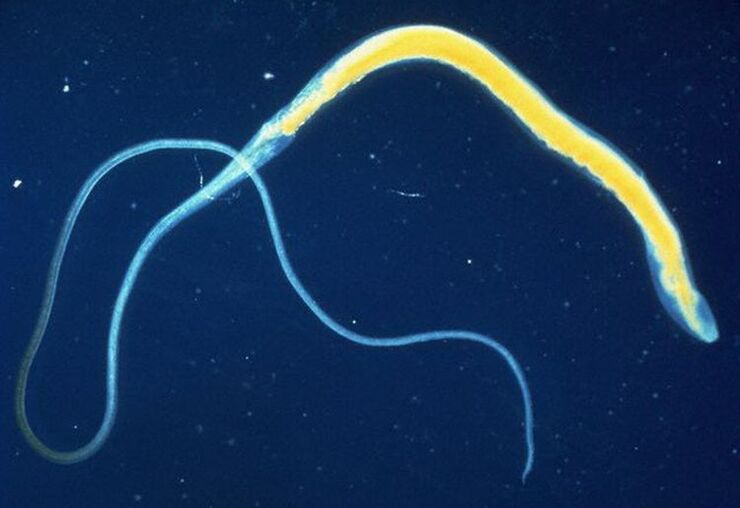
The second most common intestinal parasite is whipworm, whipworm. Infections caused by such worms are usually asymptomatic, making it difficult to accurately identify an infected person.
Adult whipworms are 3-5 cm long. Worm infections occur through the oral route-through the use of contaminated food or water, and through contaminated soil. The larvae of the parasite hatch in the small intestine, and the adults build nests in the large intestine. Adult females lay eggs, hatch with feces after 5 weeks of nesting, and hatch in warm soil.
In the worst case, whipworm will only cause abdominal pain, diarrhea or nausea. The more serious complications of this infection only occur in tropical regions. In severe cases, chronic diarrhea or anemia may occur.
Nematode
Human nematodes include two parasites-Ancylostomaduodenale and Necatoramericanus. Adult females are 10-13 mm (A. duodenum) or 9-11 mm (North America), and males are 8-11 mm (duodenum) and 7-9 mm (North America).
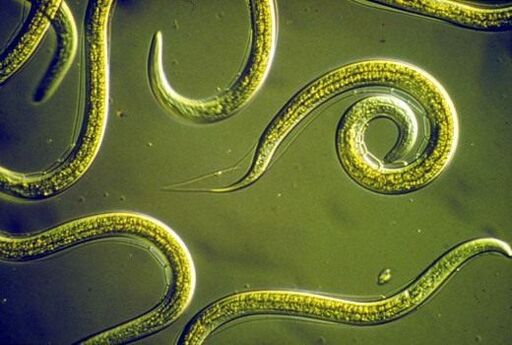
The eggs are excreted from the host through feces. Under favorable conditions (humidity, warmth), the larvae will hatch in soil or feces within 1-2 days, and after 5-10 days they will become larvae capable of spreading infection. Under favorable natural conditions, they can survive for 3-4 weeks.
Contact with the human body occurs through the penetration of the skin by parasite larvae. They reach the heart and lungs through the bloodstream, enter the alveoli, and then enter the pharynx from the bronchial tree, where they are swallowed. The larva reaches the small intestine and stays there for a while to develop into an adult.
Adult worms live in the small intestine, attach themselves to the intestinal wall, and feed on the blood of the human host. Most of these parasites are cleared from the body within 1-2 years, but the record of their parasites in the body can reach decades.
The larvae of duodenal worms that penetrate human skin are inactive (whether in the intestines or muscles). In addition, duodenal Candida parasitic infections can also be transmitted orally. However, N. americana worms need to migrate.
roundworms
Roundworms-roundworms-are also intestinal parasites. Adults can grow up to 25 cm in length. Worms in this type of human body will hide for a long time. Their symptoms are usually fatigue and coughing, which in most cases are due to other reasons.
For helminthiasis, unwashed vegetables and fruits are sufficient.
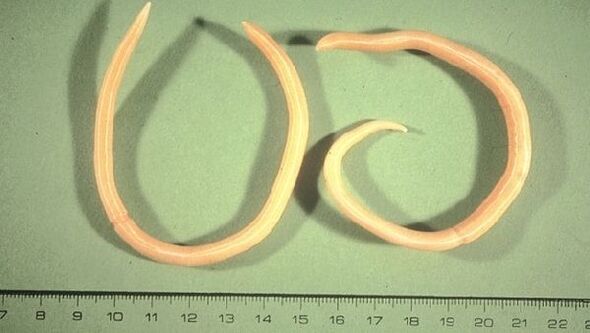
The larvae of these worms nest and hatch in the small intestine, penetrating the intestinal wall. Through blood and lymph flow, they reach the lungs and cause coughing. When coughing, the green mucus is cleared, and the roundworm returns to the intestines after swallowing. Roundworm eggs are excreted with feces.
The most common source of infection between people is infected human feces.
In severe cases, roundworms can cause inflammation in the body, the most common being pneumonia. However, in most cases, the person infected with the worm still has no symptoms, or the symptoms are so mild that neither the patient nor the attending doctor initially suspected infection with intestinal parasites.
The disease caused by roundworms is called ascariasis. The main route of infection is feces or mouth.
According to estimates by the World Health Organization, about 1 billion people are infected with worms every year.
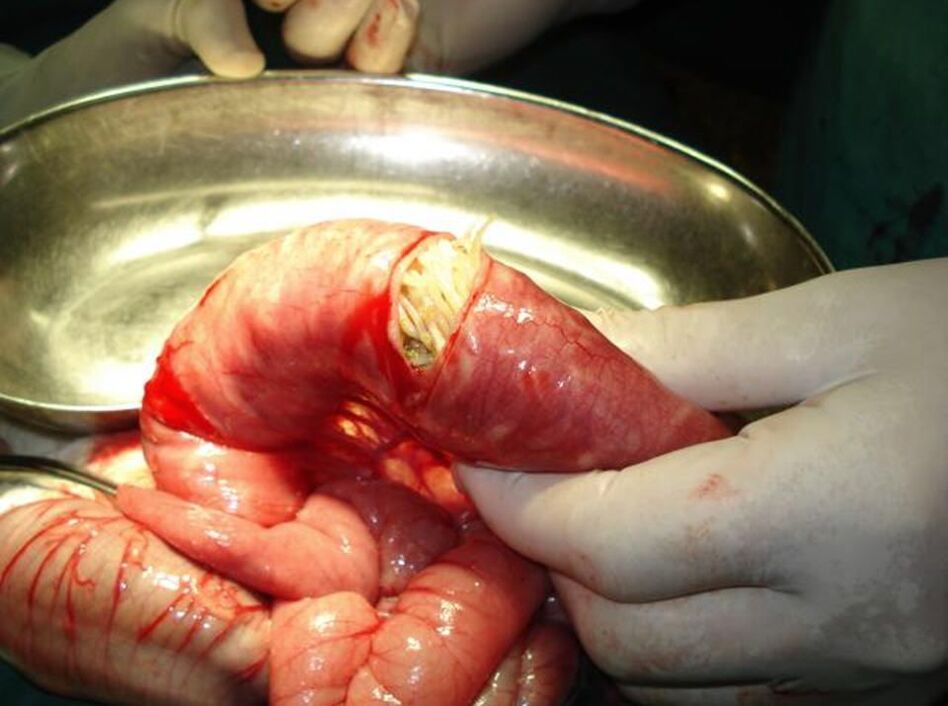
The symptoms and treatment of adult worms depend on the location of the worm, with a variety of clinical manifestations-from asymptomatic forms to severe and even fatal cases. Common symptoms are abdominal discomfort and soreness, diarrhea, rectal itching or allergic manifestations. In the first-migration-stage, the larvae of the parasite can cause signs of inflammation in the lungs (Loeffler syndrome), pancreas, heart muscle, liver, and other organs.
Roundworms in the intestine are the cause of metabolic disorders and nervous system disorders.
Ascaris in the respiratory organs
When worms migrate in the human body, they pass through the pharynx, where they colonize the lymph nodes around the main lymphatic chain (Waldeyer's chain).
Places where worm larvae may be present:
- Lymph glands and salivary glands;
- pharynx;
- throat;
- The area along the ear canal leading to the middle ear;
- All the pathways to the brain.
The side wall of the nasopharynx has an opening leading to the Eustachian tube, which connects the pharynx to the middle ear. This allows the pressure in the ear to balance with atmospheric pressure. Along these paths, worm larvae can reach the middle ear. As a result, hearing loss, tinnitus, headaches and Meniere's syndrome-moments of dizziness, accompanied by memory loss.
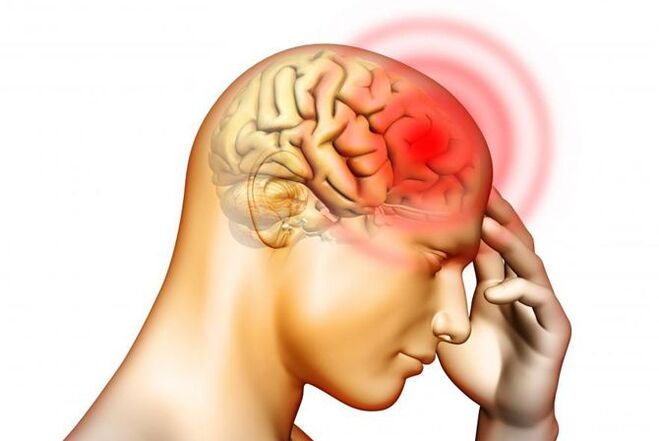
Ascaris pulmonary manifestations
When the lungs are damaged by roundworms, the organs and skin appear rough and rash. These symptoms are accompanied by a slight increase in body temperature, but sometimes fever symptoms occur. The person suffers from dry cough, asthmatic bronchitis and hoarseness. Untreated pulmonary roundworms can develop into seasonal chronic problems and eventually lead to severe bronchial asthma. This person is addicted to drugs and sometimes even retire on disability pension.
Ascaris of other organs
As the worm larvae colonize other organs, they will show signs of slight bleeding and inflammation.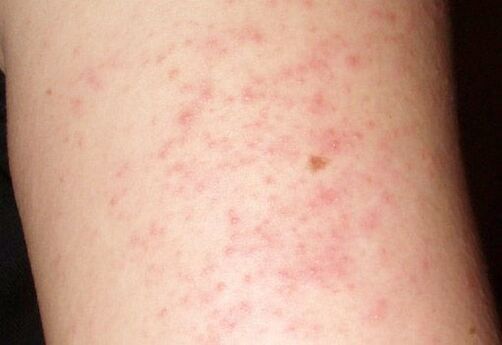 They can penetrate the pancreas, bile ducts and liver. In the small intestine, the larvae condense into "clumps", causing intestinal obstruction. Parasite larvae live in these organs throughout their lives, feed on their metabolites and destroy them mechanically.
They can penetrate the pancreas, bile ducts and liver. In the small intestine, the larvae condense into "clumps", causing intestinal obstruction. Parasite larvae live in these organs throughout their lives, feed on their metabolites and destroy them mechanically.
When there are larvae in the hepatobiliary ducts, the function of the liver is weakened and toxic substances cannot be excreted naturally. As a result, they are excreted through the skin, causing allergies, itchy rashes, subcutaneous swelling of "unknown" origin, and other manifestations of many changes from dry eczema to purulent processes.
Roundworms in the brain
The symptoms of brain attack vary depending on the location of the worm larvae. If they are in the meninges, there is a risk of migraine meningoencephalitis. When the grooves are colonized, granulomas form in the gray crust.
Later, symptoms of brain cancer appeared: loss of consciousness, seizures, convulsions. If the granuloma is located near the optic or auditory nerves, deafness or visual impairment will occur.
tapeworm
Chain-Taeniasaginata, Taeniasolium-is one of the oldest and most famous intestinal parasites. It can reach a record length-up to 9 m.
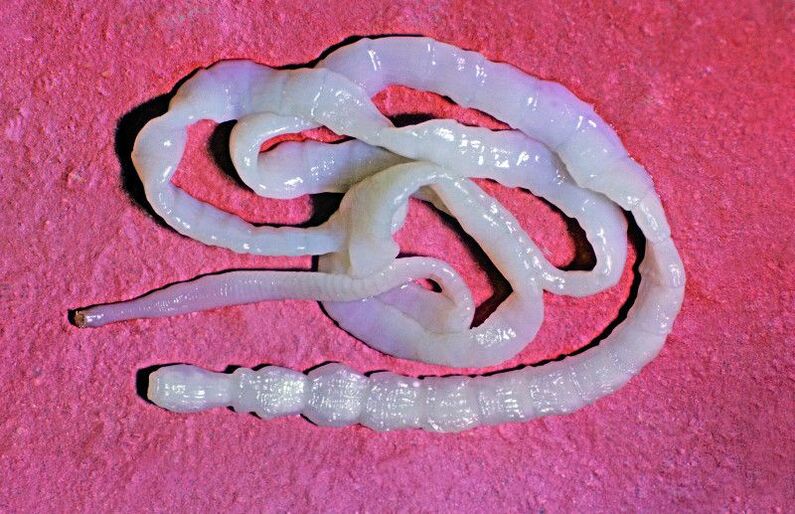
The two most common types of worms are cow tapeworm (Taeniasaginata) and pork tapeworm (Taeniasolium). Both types will colonize the body after eating raw or undercooked meat. The eggs of the parasite are very long and are deposited in the small intestine. Adults develop after 3 months. The end of the worm's body is filled with eggs, which are released individually and excreted through feces. The larvae have the ability to enter the bloodstream through the intestinal mucosa, then migrate to the muscles and brain, and settle there.
Although the disease is serious, the tapeworm does not necessarily cause the symptoms of its existence immediately, so it will remain invisible for a long time. The chains in the muscles can cause muscle pain, and in the brain-seizures.
Parasites are detected by X-ray or computed tomography. Only on the basis of these studies can an accurate diagnosis be made.
Parasite treatment
There are many treatments for worms. They include popular antiparasitic herbs and the most modern bioresonance therapy.
Antiparasitic drugs
The rules for using antiparasitic drugs are based on the positioning of the worm in the body.

In the following cases, it is recommended to receive half an hour before meals:
- Parasites in the intestines and lower body;
- Secondary infection of genitourinary system worms.
Use with food: damage caused by parasites in the stomach, colon, liver, and spleen.
Use after meals: Parasites infect the upper body, lungs, neck, and head.
Recommendations for using antiparasitic drugs:
- Not recommended for pregnant women;
- One of the most common herbs for worms, wormwood, should not be used for stomach ulcers.
Chemical antiparasitic drugs
The most effective are drugs containing methyl carbamate. This active substance is used to treat pinworms, whipworms, roundworms, and tapeworms. When treating pinworms, administer according to the instructions. Use these drugs to treat other parasites based on age.
Dosage compliance is important to avoid cramps.

Treatment by applying the treatment frequency on the bioresonance device and using the plasma generator
These devices can destroy pathogens in the body without any negative effects. When using a bioresonance device, electrical pulses pass through the tissue, and when using a plasma generator-radio waves, it will cause the parasite membrane to vibrate. The result is a rupture of the membrane, which destroys the parasite. For each type of microorganism, a specific frequency is applied.
During the treatment of this kind of worm, it is very important to comply with institutional measures: prohibiting alcohol and subsequent detoxification. Dead insects must be removed from the body, otherwise they will be encapsulated and act like allergens.
By using these methods for treatment, all the parasites present are eliminated. The treatment is carried out in two stages:
- Phase 1: Removal of small parasites-20 minutes for each microorganism;
- Stage 2-removal of large worms-first, the frequency is used to destroy the eggs, then the larvae, and finally the adults.
The best time to treat:
- Single cell: plasma-5 minutes per frequency; bioresonance-20 minutes per frequency.
- Multicellular: Plasma-10 minutes per frequency; Bioresonance-4 × 20 minutes, using 1 frequency.
Using a plasma generator, in addition to significantly shortening the operation time, there is a big advantage-when using it, up to 5 people can be present with the animal. Its range of action can reach up to 5 m.
in conclusion
Treating worms includes eliminating sugar, sweet baked goods and potatoes-these foods create an ideal environment for worms.
In the case of treating a child, it is recommended to give him roasted pumpkin seeds to chew-about 30 capsules 3 times a day. They should not be consumed with staple foods.
Eating raw garlic in moderation can also help eradicate worms.
Without proper hygiene, getting rid of worms will not work. Frequent hand washing, frequent washing of bedding and tableware are the basis for effective treatment.




























